Episode #423: Does Everyone Know What Fluency in Math Means? Understanding The Math Coherence Gap
LISTEN NOW HERE…
WATCH NOW…
Have you ever left a team meeting feeling confident everyone was working toward the same math goal, only to realize later that each person defined success in a different way?
This episode explores how that kind of disconnect can quietly stall school improvement in mathematics. A school team set out to strengthen math fluency with clear objectives and measurable outcomes. Yet when each member was asked to describe what fluency meant, their answers revealed four different interpretations of what mathematical fluency looks and sounds like in the classroom. That moment exposed a deeper issue: the difference between being aligned and being truly coherent in math teaching and learning.
Drawing on Michael Fullan’s research on the right levers for system change, the discussion examines how fragmented math initiatives, competing priorities, and disconnected professional learning can prevent real progress for students.
Listeners will come away with a clearer understanding of how to:
- Recognize when misalignment around key math concepts such as fluency, reasoning, and problem solving is creating invisible friction.
- Build coherence across math classrooms, schools, and systems so that professional learning, coaching, and curriculum decisions all reinforce the same mathematical goals.
- Engage every level of the system—teachers, coaches, and leaders—in shaping a shared vision for mathematics connected to a moral purpose of improving learning for all students.
Press play to explore what coherence really means in mathematics and discover how a shared understanding can move your entire system forward together.
Attention District Math Leaders:
Not sure what matters most when designing math improvement plans? Take this assessment and get a free customized report: https://makemathmoments.com/grow/
Ready to design your math improvement plan with guidance, support and using structure? Learn how to follow our 4 stage process. https://growyourmathprogram.com
Looking to supplement your curriculum with problem based lessons and units? Make Math Moments Problem Based Lessons & Units
Be Our Next Podcast Guest!
Join as an Interview Guest or on a Mentoring Moment Call
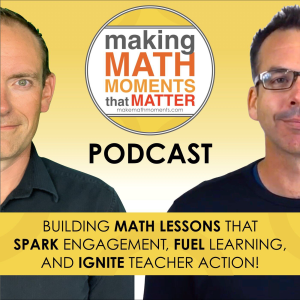
Apply to be a Featured Interview Guest
Book a Mentoring Moment Coaching Call
Are You an Official Math Moment Maker?
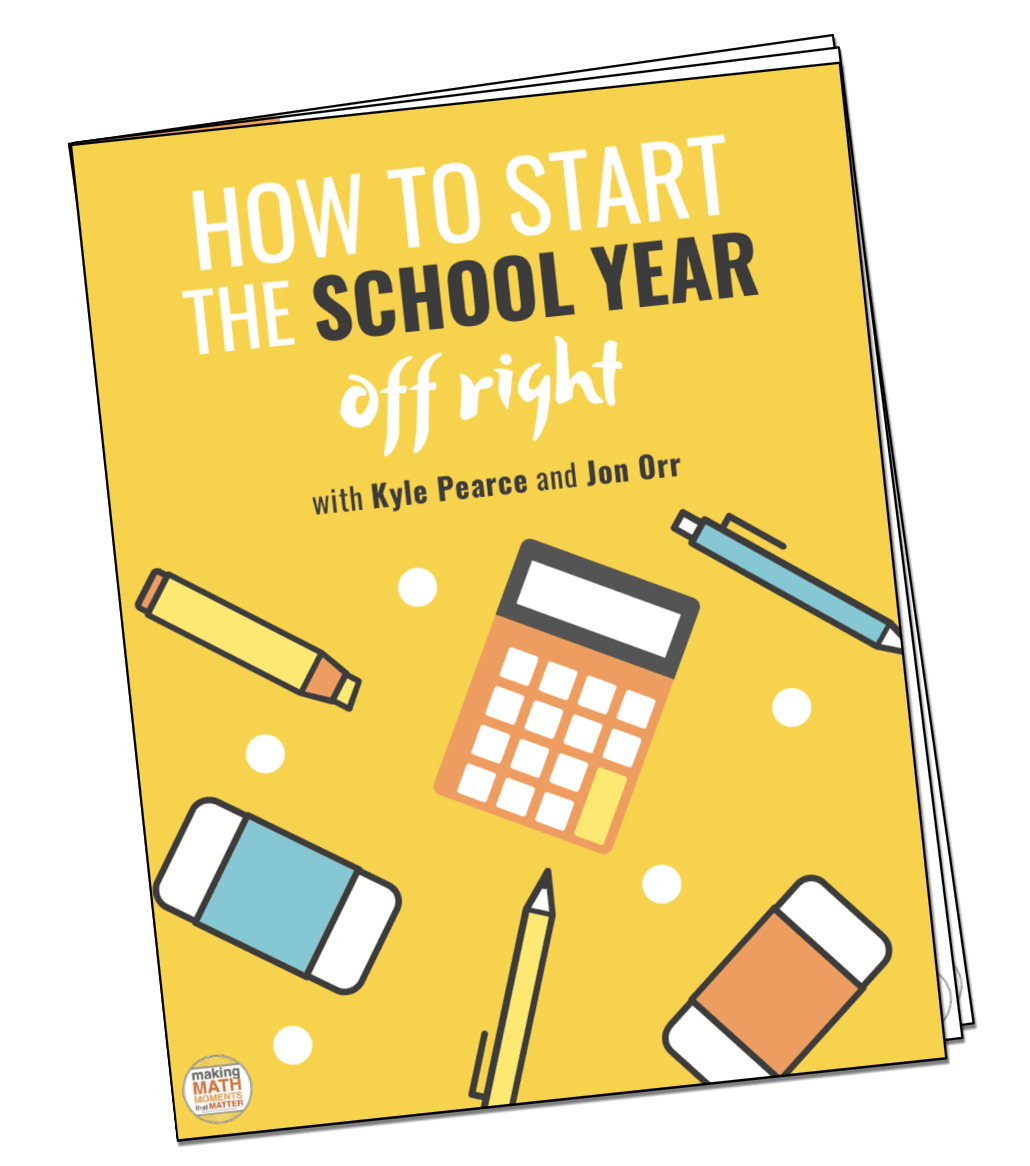
FULL TRANSCRIPT
I was on a call with one of our district partners earlier this week. It was a school team that I was coaching and I got off the call and I started to, I guess, wonder if maybe there was a pebble that might be getting in their way or something, maybe a boulder. And I was trying to unpack the potential boulder they were experiencing so that we can make recommendations for how they can move forward. And so, Today we’re gonna kind of dig into the theory behind what they might be experiencing and what some of the research says as far as removing this boulder. And then on Thursday, we’ll get into the specifics about this particular site and our recommendations for this school and their path forward in school improvement. But I’m gonna set a little bit of the context. So this is a school that’s part of a system that has been working through the OKR process. So they have a vision and In this particular system, the schools are very autonomous. So the process looks the same in every site, but the direction that they’re taking as far as school improvement is completely left to the discretion of the school team. And so this particular school has a vision. They have two objectives or zones that they’re trying to strengthen and they’ve identified two really specific key results. that they want to hit by the end of this year. But when I started to talk through with this team, you know, so for example, one of their objectives was around fluency. They wanted to strengthen so you know, really good objective their their long term goal is to strengthen student fluency. And their key result to support the implementation of fluency routines three times a week in every classroom by May of this year. But when I started to ask the team, know, tell me what you mean by fluency or describe to me what you mean by a fluency routine. So if I was to walk into your classrooms by May of this year and it was you successfully implemented fluency routines three times a week, what would that look like, sound like, feel like? And where I started to question whether there might be a barrier or a, you know, a boulder in the road for this team is that when I asked them to describe fluency and the routine. There were four people in the room. Four people had very different answers of what fluency is, and four people had very different answers of what they were trying to implement as far as a routine. Very different. Like one was talking about, you know, time. No, this was a team. This was a team who’s been at the table for months. meeting together regularly.
Yvette, it reminds me like we had many of these types of meetings, you and I, when we were working with our team. it took us a long time to recognize that we all thought we were on track and we all had similar ideas. But we ultimately had various opinions and perspectives on what we mean when we say one thing or another.
So I started to question, you know, I thought, and we’ll talk more on Thursday about our recommendations for that particular team and how they move past this. But the issue that I came to mind for me was coherence. Or, you know, sometimes they say alignment or shared vision, you know, are we all aspiring for the same outcome? the change we’re supporting the same change? and this is-
And how deep and how clear is that? And that’s the part I think is so difficult, because I think in general, we all want the same thing in general. But it’s very general. And that is where we start to see some of these challenges really start to come to light.
Well, think of it like this. This is the problem of just assumptions, of thinking. Because we’re talking about a team who knows the pathway forward in a way they know that having a vision is essential and having goals that are measurable in pieces to improvement and alignment around that improvement is essential to moving forward for systemized improvement. But you’re talking about though is that we might say we have a vision, but do we understand that what language we’re using around that vision and around what we’re really trying to move. So if we could say fluency, but right now we just made the assumption that everybody knows what fluency is, but we’ve done nothing. We’ve done nothing to create true alignment around what fluency means and understands and what does it look like and sound like and what does it look like in our classrooms. Like we just said, we’re gonna do this. we’re going to have fluency, but we haven’t done the legwork to kind of make sure that we bring awareness and understanding towards that. And I think you can think about the research here. This is, I think, the bigger problem with, say, bringing on the research, because we’re going to share some research here that says these are important things. Alignment, co- I think what you’re going to say, Yvette, is there’s a difference between alignment and coherence. Because I can say we’re aligned, but are we really? unless we can really truly try to measure the coherence of that alignment. Because like if you think about we’ve shared systems from instructional improvement in our live sessions and on our webinar, you know, we just got back from NCTM and NCSM, we were sharing some of the findings from that. And the center of that model is having this very clear vision for high quality instruction, which might include the words fluency, or it might include the words, you know, resiliency. But what we’re really saying is that like, even though that research says is important, there’s a lot more to go into making that become a real reality than just saying we have a vision.
I tried to step away from this isolated team and look at the bigger picture and the system that they are a part of to see maybe, because oftentimes, right, we talked about this recently, like it’s probably not the people, it’s probably the system that has created this, you know, lack of alignment or coherence. And so I look to Michael Follin’s work, who he published a paper in 2011, where he talked about the wrong drivers, you know, the wrong drivers for school reform. and I don’t want to talk in a way that’s too narrow about this research. I recommend our listeners go and read the original paper from 2011 and then the 2021 updated version, which is the right drivers. But in that original paper in 2011, he talked about fragmentation and he basically said, you know, the problem that we’ve been having over the past 40 years is not a lack of change. It’s like disconnected, fragmented. too much turnover, running in different directions. It’s the lack of coherence across the system that is actually the problem. It’s not that we don’t have initiatives or that we don’t think change should be happening. It’s just that there’s too many competing priorities. It’s disjointed. We don’t see it through. We turn them over, turn them over. We just keep turning them over, right? Like we just, hey, this is a great idea. Let’s try it. Let’s put it in action. And then we don’t give it the time it actually needs to like take root. And then we’re like, we’re bored with that. Let’s try something new. Or that didn’t seem to work. We measured maybe this versus that. Like we constantly do this. And then it doesn’t help, like you just said. It doesn’t help. And he’s correctly recognized this, that the leadership will shift from school to school every couple of years. I was just talking with Chris Shore who measured some leadership shifting in his own district and I think he said, I think there was like a leader’s tenure at a school was like on average 1.6 years. Like was like we knowing that we’re gonna shift leadership so often, we don’t, because I think what you’re saying is the system isn’t built to support that. The fragmentation is there because we just haven’t tried to fix or create a system that knows that we have this type of transition so that we can eliminate the fragmentation.
Well, and I want people to every like pause for a second and think about how many push back on change. So when we think about the back to basics movement, when we think about a lot of these like sort of shifts to not change, oftentimes ⁓ the data would actually support some of what they’re pushing for. And I think it’s because we’re making changes, but we’re doing it incoherently. And therefore we’re actually possibly producing poor outcomes when we do that. Like when you everyone goes in a different direction, we’ve now essentially lost coherence from what, you know, one might traditionally remember as a math classroom, for example. And that could actually have negative impact on the actual results that you’re monitoring and measuring, whether you’re measuring the right ones or not is a completely other question. But we have to be very, very cautious that when we’re making these changes that we actually are clear enough in making the change so that we’re actually not just creating chaos. And I think in many cases, this is what ends up happening. And that’s why the spaghetti at the wall approach happens. It’s why so often we go, well, I guess don’t do more of that because that clearly didn’t work. But when we say that, it’s like, don’t do all of those things because there’s so many different variations of what might actually be happening. When we thought we were making a change, when in reality we were making many different changes and we were all moving in very, very different places.
Fulon describes the opposite of fragmentation as systemness. So that’s highlighted in the 2021 article, the right drivers for whole system success. And he describes the system as a tri-level system, which we can probably relate to in a lot of contexts. It’s like the state level, the district level, the school level. So here in Ontario, know, our ministry of education at the provincial level, our districts, and then our schools. And he talks about, you know, all of those systems working together toward a common moral purpose. that every you and basically he says it’s not even enough to say that you’re a part of the system. It’s like you are the system. You are all the system and you all have a role to play within this system and you’re all you know collectively engaging in deep learning to move together coherently towards you know in a in connected functional way toward this outcome that you’re all striving for while balancing, and this is a big message that I took from all of Fullen’s work, it’s that without robbing autonomy and creativity and opportunities for refinement and responsiveness, it’s like we’re not going to have a top down or a bottom up type model. It’s like we are just all collectively working toward this common moral purpose, which might mean that people take different routes, but there is opportunity for us to engage all three systems and have common conversations because we’re not all talking about different things, we’re not all heading in different directions and the decisions that are made at the provincial level or state level should support us at the local level. And my example of this right now in our context is what’s happening in Ontario around the right to read. And I think this is a really good example of coherence. This is why. When the Human Rights Commission came out with their recommendations and they said it is a human right for students in public education in Ontario to learn to read. And we are making these recommendations that are based on dignity, they’re based on equity, which is one of the other drivers that Fullen identifies in the 2021 article. We now have a common moral purpose that is easy to commit to. We all know the outcome that we’re striving for. And then every level of the system needs to do their part in removing barriers and making sure that that is the outcome we all achieve. And so what does that look like at the provincial level, at the district level, and at the local level, teacher level? But the idea is that we’re all having the same conversations. We’re all learning with and from each other because our purpose has been clearly defined and we can all commit to that purpose. So now imagine, you you’re engaging in professional development. The ministry is offering sessions. The ministry is updating the curriculum. The ministry is defining which assessments should be used. These should all align and be coherent because we all know that we’re working toward this common outcome.
Yeah, think about the misalignment that’s happening when we don’t have the alignment between all three levels. Like you’re saying, it looks great if we have it because we can utilize resources here, utilize resources there, but when we don’t have it, then think about the support and how that support could roll out. If all you said, if you didn’t give this moral, alignment and moral vision of what we’re trying to do and say typically mathematics, this is where we’re trying to go. but then you still said, I want every school to create something like that. I want every school to like have goals and work towards something for improvement purposes. Because that makes sense. Then that’s full autonomy without say any sort of guidance then we can’t align the support. because now all of a sudden feels too much. And this is what we hear when we talk with districts all the time. It’s like there’s only one of me, there’s two of me. Like how do I do all of this? Because we don’t have the resources to account for all the things, but we have all the things because we didn’t give that clear vision of like this is where we’re all trying to go so that we could streamline the support to all move towards the same vision. for mathematics or the same resources, because all of a sudden now, like you’re suggesting, the ministry can coordinate with districts or the state can coordinate with districts, the district can coordinate with schools to make sure that we have the right tools in place. Keeping the autonomy at the school level or even at the district level to figure out the how, but then knowing that there’s support here to make sure, like it’s just, a coordination can just make so much easier to go when we have, say this, this moral guidance or this vision of what we’re trying to achieve. just most, teams don’t have it.
That actually came up in a conversation yesterday with another district that we support separate from our case study for today’s episode, where they were essentially saying just that, you there are five of them at the district level who are supporting math and they have 70 sites that they support. And that idea of like all of their sites are, you know, they tried to create, and this goes back to Fullin’s work as well of like the sandbox. You know, it’s like we need to exist within this sandbox, which is this idea of like tight but loose. You know, we need like tight expectations and tight goals and a tight vision for what we’re trying to achieve with autonomy on the how. But what they were saying is that they tried to do that actually. They basically said, you know, we’re going to support the implementation of three of the high impact practices. But then some of their schools went in different directions because it’s like this is what our teachers felt was most pressing at this time. But now it’s hard to align support. It becomes really difficult to ensure that all of the professional development. So we always think about, go down to the teacher who’s at the receiving end of all of this information. It’s like they’re getting pulled out for PD from the district. They might be attending webinars or sessions from the ministry. They are getting PLCs in their building. They’re going to staff meetings. And imagine that every one of those different opportunities was a different message, a different focus. It’s like it doesn’t actually result in very much learning or again, it feels fragmented. It feels like it’s just gonna change. And it’s really hard to coordinate support if we aren’t all in agreement that this is the work that we are striving for. This is the outcome that we’re hoping to collectively achieve over the next three to five years. It comes back to Hattie’s work, right, around teacher clarity. It’s like if the teacher is not clear in the classroom on where we’re going and what the learning outcome is going to be, there’s likely not going to be a lot of meaningful learning. And that comes back, you you zoom out to the district level. Are we all clear on what it is we’re trying to collectively achieve and what the learning outcome is? Zoom out again to the state level or the provincial level or the national level if you’re part of a charter system. Are we all in agreement about what we’re collectively trying to achieve? And if not, we are gonna get stuck in the cycle that we’ve been in for the past 40 years, which is just a lot of change, a lot of initiatives, but very little impact.
Yeah. So, Yvette, what would you say, like I know that we’re in our next episode, so we don’t just stick around, you know, for the next episode, because we are going to take this further to unpack the team that we talked about at the top of this episode to, you know, get into the details about what they were experiencing, but then how they specifically transitioned through this. What would you say is a recommendation that no matter what team I am, whether I’m at the state level, I’m at the district level, or I’m at the school level is like, what recommendations would you make? I know this is in a general way, but what would we tell people to like, this is what maybe you should be thinking about or what you should be doing?
I would say whatever system you are a part of. So imagine, go back to this team that we described at the top of the episode. They thought they were working towards the same outcome. But after probing a little bit and asking some questions, it became very clear that the outcome was not clearly defined. So how do we engage others in a conversation around What is it ultimately that we’re trying to achieve here? Do we have the same coherent understanding and aligned vision of what it is we’re hoping to see shift in classrooms? What the outcome is that we want for students? Because if not, even within that tiny system, they’re already pulling in different directions. If one leader is saying it looks like this and another leader is saying, it looks like that. alignment is not there, the coherence isn’t there.
Well, well, and I think this, this really comes down to how easy it is to underestimate the time and effort and attention we must pay to building that vision and focusing on that planning. Everyone in their mind, when we work with our district improvement clients, oftentimes in their mind, they’re like, by the end of this week, we’ll be clear on our vision. And in reality, it usually takes a whole lot longer because There’s so many stones that we haven’t actually overturned and haven’t recognized are truly pebbles or boulders, as you had mentioned in our shoe that we need to resolve before we can head out into those other layers of the system in order to actually see the actual change that we’re after. We need to get clear ourselves. We need to get clear as a unit. And then we need to help everyone else become clear. And you know, something that really resonated with me in this, in this conversation is, you know, you hear people saying, I, when they, when they feel aligned with something, they say, I can get behind that, but it’s actually not getting behind something. It’s being a part of it and being in that change as you had referenced, right? So how do we make sure that happens? Well, we need to make sure we’re all running the same system. We’re all understanding those goals and those objectives and that we’re all incredibly aligned. so that when we do go and do the quote unquote work, we are all heading in the direct or the actual direction that we’re aiming for.
so when you think about it, it’s like, what, you, would recommend is to say, like, you’ve heard us say this on the podcast, you’ve been a regular listener is that a vision is essential to the work that you’re trying to do, whether I, whatever level you’re currently at, whether, because if there’s no vision, make one wherever you are, but it’s not enough. Like you have to now ask yourself, how do I know that this vision is coherent across my current system, whether it’s wherever I am at, I have to be able to answer that. And therefore, it might all of a sudden, like what Kyle just said, it might all of a sudden become, if you can’t confidently say that we do have a coherent vision, then that might become the work for a while for us to make sure. And that might be noble work, because you could say by the end of this year, or by the end of two years, if everybody had a clearer picture of what we really meant when we talked about this, that would be huge. Because right now, it’s disjointed, like you said, Yvette. everything’s disjointed because we have different definitions. We think we might be able to align things, but we have different definitions and we can’t possibly be disjointed. Now, think about this, when we get clear, I haven’t shared this with you two yet, but I just got a message from one of our partners who we, for a certain amount of time, we only help them with getting clear on what the vision would be and what that looks like and their goals for the year. this person emailed back to state, hey, this is where we’re at after only two years. We have increased, I think 46 schools reached above average growth on four achievement high growth results. They were like, we’ve had significant change just because we streamlined some of the work that we could do because we had a vision. They said all grades improved compared to two years prior and then they also are now all exceeding. pre-pandemic performance. And then this leader who is doing this, got leader of the year, administrator of the year for that year. So this is an important component that we do have to make sure is part of the work that you’re trying to do.
Our call to action to our leaders today is to go and read these articles, because I feel like I oversimplified and I was kind of cherry picking one of the drivers, but this is actually bigger than just the systemness idea that we shared today. So the right drivers for whole system success is an article from 2021 by Michael Follin that’s going to maybe help us deepen our understanding of how to create systems that move, systems that result in true change.
And if you want us to take a look at your system, you want us to kind of dig in to help you kind of see where some improvements can be made, head on over to makemathmoments.com for us at Discovery. Hop on a quick call with us and we can be talking about some of the pebbles or the barriers or the boulders that you could be clearing up so that you can create math improvement and a sustainable math improvement plan for this year and following years.
Thanks For Listening
- Book a Math Mentoring Moment
- Apply to be a Featured Interview Guest
- Leave a note in the comment section below.
- Share this show on Twitter, or Facebook.
To help out the show:
- Leave an honest review on iTunes. Your ratings and reviews really help and we read each one.
- Subscribe on iTunes, Google Play, and Spotify.
DOWNLOAD THE 3 ACT MATH TASK TIP SHEET SO THEY RUN WITHOUT A HITCH!
Download the 2-page printable 3 Act Math Tip Sheet to ensure that you have the best start to your journey using 3 Act math Tasks to spark curiosity and fuel sense making in your math classroom!
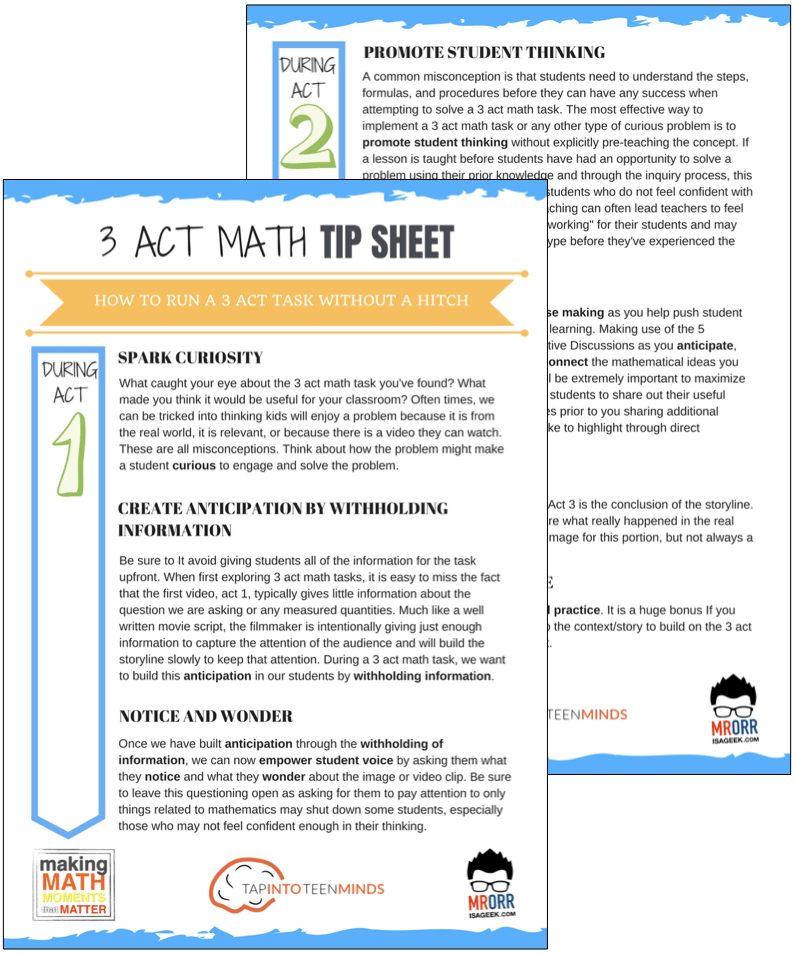
LESSONS TO MAKE MATH MOMENTS
Each lesson consists of:
Each Make Math Moments Problem Based Lesson consists of a Teacher Guide to lead you step-by-step through the planning process to ensure your lesson runs without a hitch!
Each Teacher Guide consists of:
- Intentionality of the lesson;
- A step-by-step walk through of each phase of the lesson;
- Visuals, animations, and videos unpacking big ideas, strategies, and models we intend to emerge during the lesson;
- Sample student approaches to assist in anticipating what your students might do;
- Resources and downloads including Keynote, Powerpoint, Media Files, and Teacher Guide printable PDF; and,
- Much more!
Each Make Math Moments Problem Based Lesson begins with a story, visual, video, or other method to Spark Curiosity through context.
Students will often Notice and Wonder before making an estimate to draw them in and invest in the problem.
After student voice has been heard and acknowledged, we will set students off on a Productive Struggle via a prompt related to the Spark context.
These prompts are given each lesson with the following conditions:
- No calculators are to be used; and,
- Students are to focus on how they can convince their math community that their solution is valid.
Students are left to engage in a productive struggle as the facilitator circulates to observe and engage in conversation as a means of assessing formatively.
The facilitator is instructed through the Teacher Guide on what specific strategies and models could be used to make connections and consolidate the learning from the lesson.
Often times, animations and walk through videos are provided in the Teacher Guide to assist with planning and delivering the consolidation.
A review image, video, or animation is provided as a conclusion to the task from the lesson.
While this might feel like a natural ending to the context students have been exploring, it is just the beginning as we look to leverage this context via extensions and additional lessons to dig deeper.
At the end of each lesson, consolidation prompts and/or extensions are crafted for students to purposefully practice and demonstrate their current understanding.
Facilitators are encouraged to collect these consolidation prompts as a means to engage in the assessment process and inform next moves for instruction.
In multi-day units of study, Math Talks are crafted to help build on the thinking from the previous day and build towards the next step in the developmental progression of the concept(s) we are exploring.
Each Math Talk is constructed as a string of related problems that build with intentionality to emerge specific big ideas, strategies, and mathematical models.
Make Math Moments Problem Based Lessons and Day 1 Teacher Guides are openly available for you to leverage and use with your students without becoming a Make Math Moments Academy Member.
Use our OPEN ACCESS multi-day problem based units!
Make Math Moments Problem Based Lessons and Day 1 Teacher Guides are openly available for you to leverage and use with your students without becoming a Make Math Moments Academy Member.
Partitive Division Resulting in a Fraction
Equivalence and Algebraic Substitution
Represent Categorical Data & Explore Mean
Downloadable resources including blackline masters, handouts, printable Tips Sheets, slide shows, and media files do require a Make Math Moments Academy Membership.
ONLINE WORKSHOP REGISTRATION
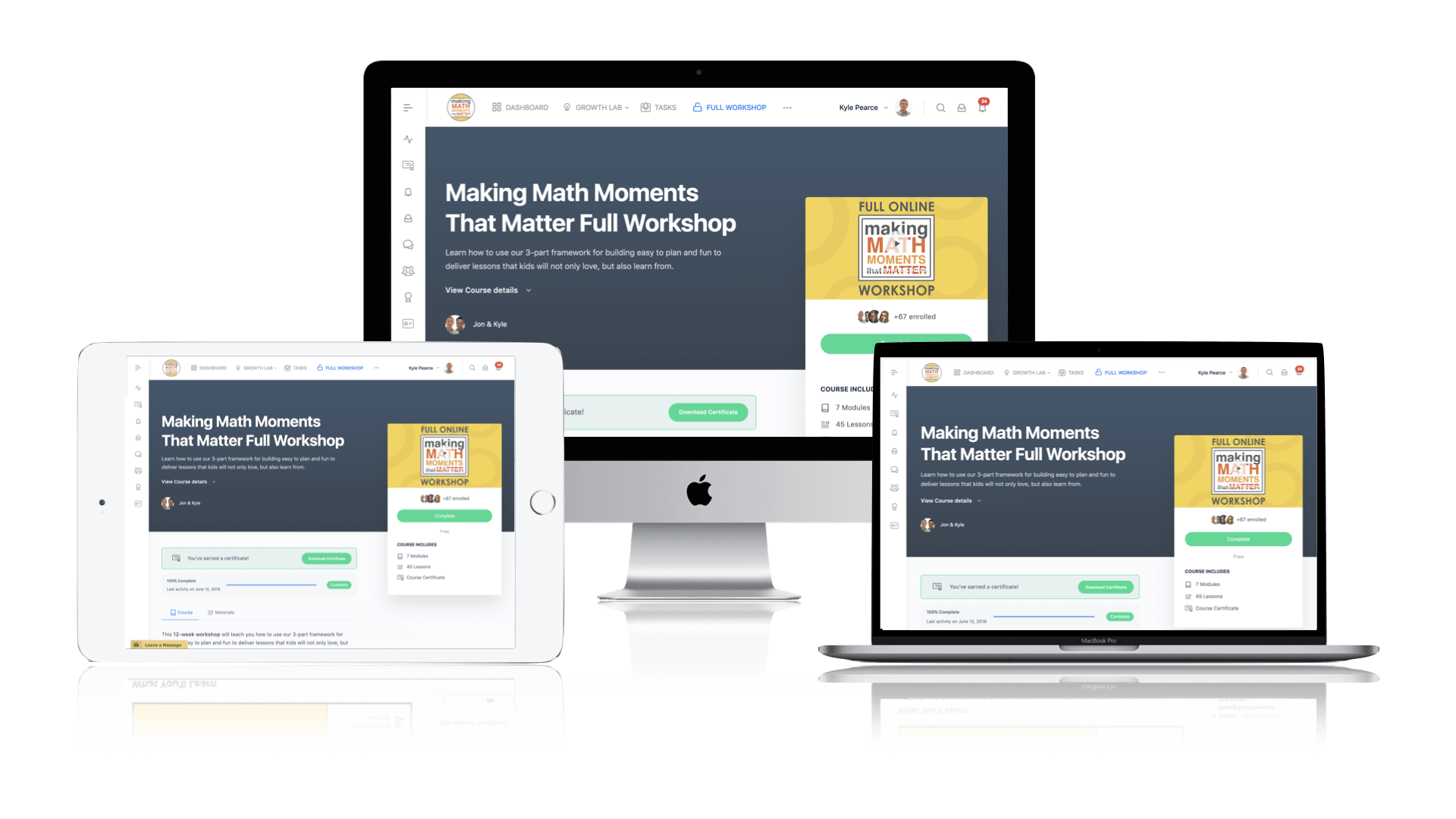
Pedagogically aligned for teachers of K through Grade 12 with content specific examples from Grades 3 through Grade 10.
In our self-paced, 12-week Online Workshop, you'll learn how to craft new and transform your current lessons to Spark Curiosity, Fuel Sense Making, and Ignite Your Teacher Moves to promote resilient problem solvers.
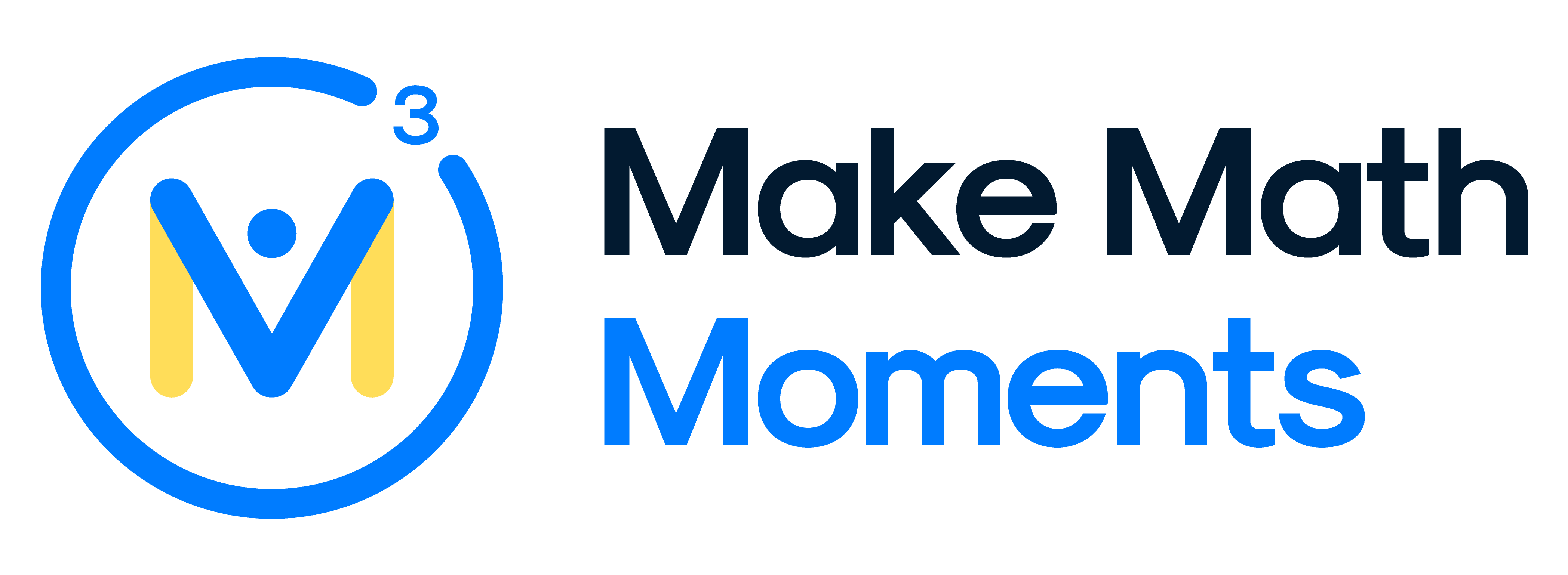

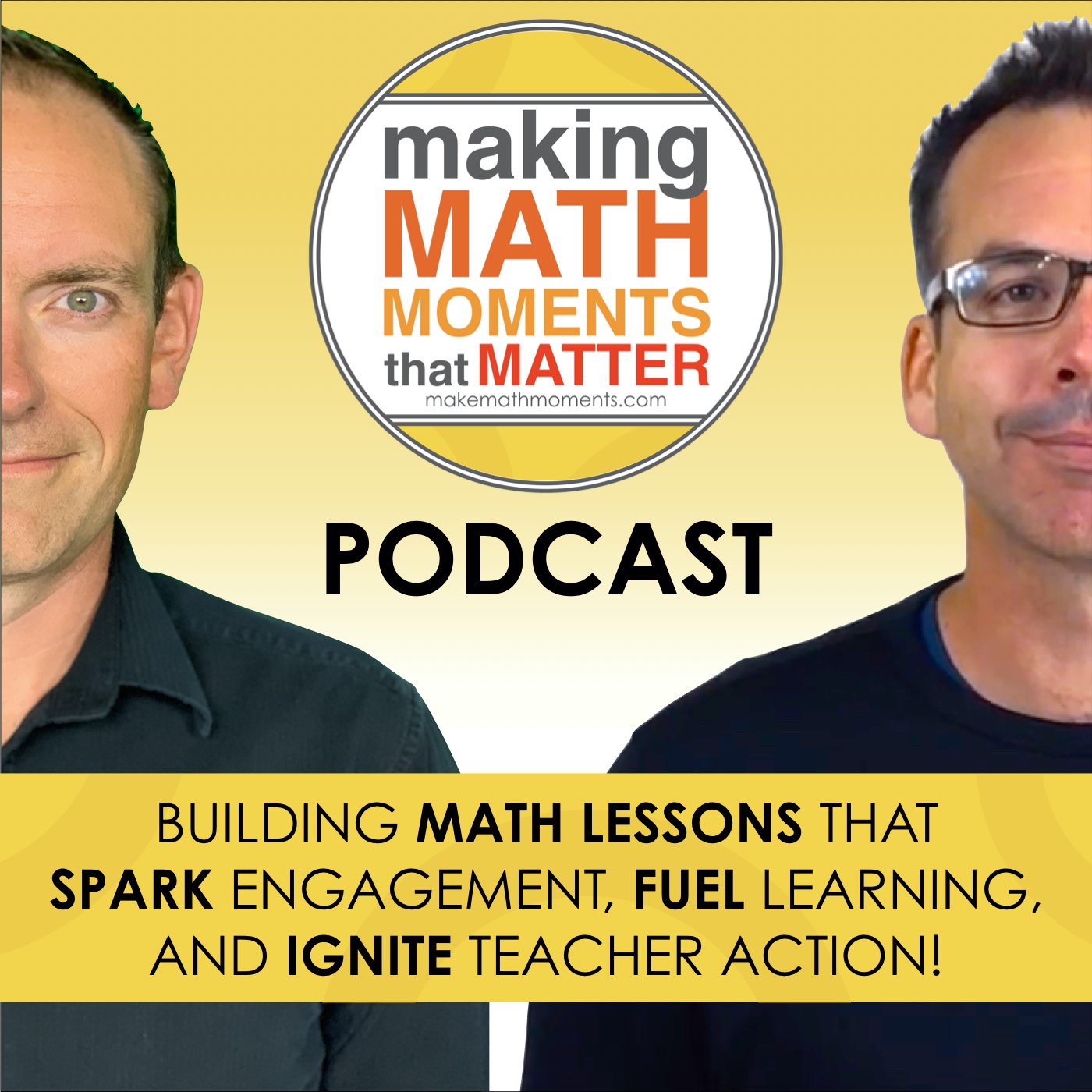

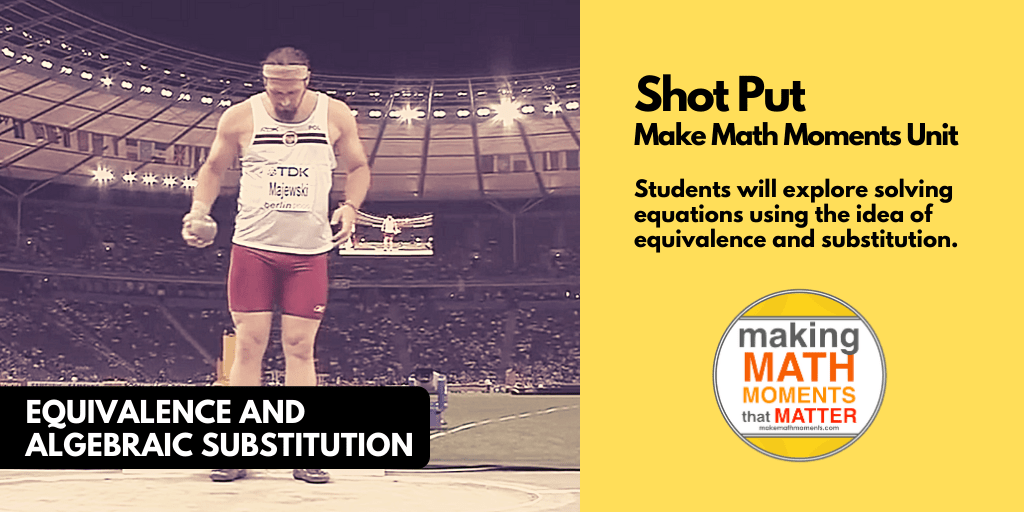
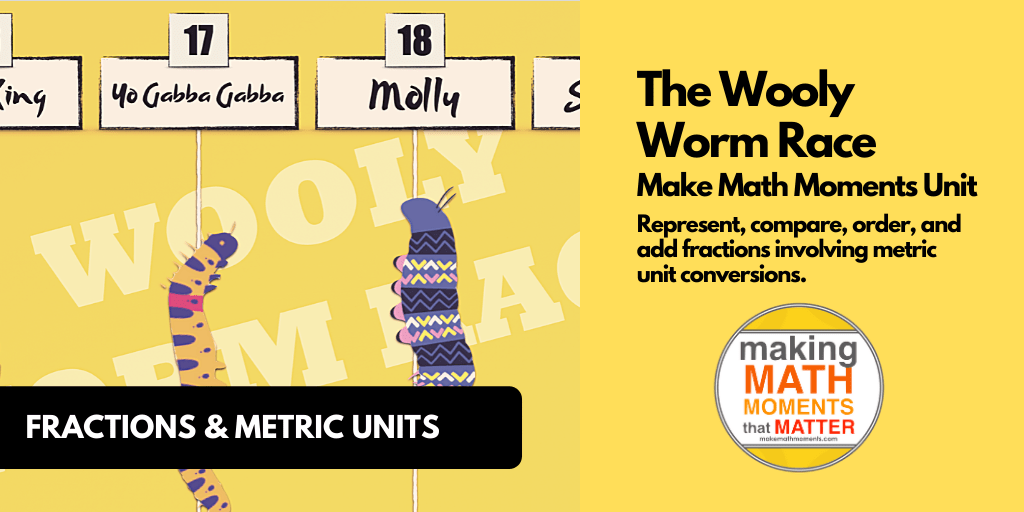
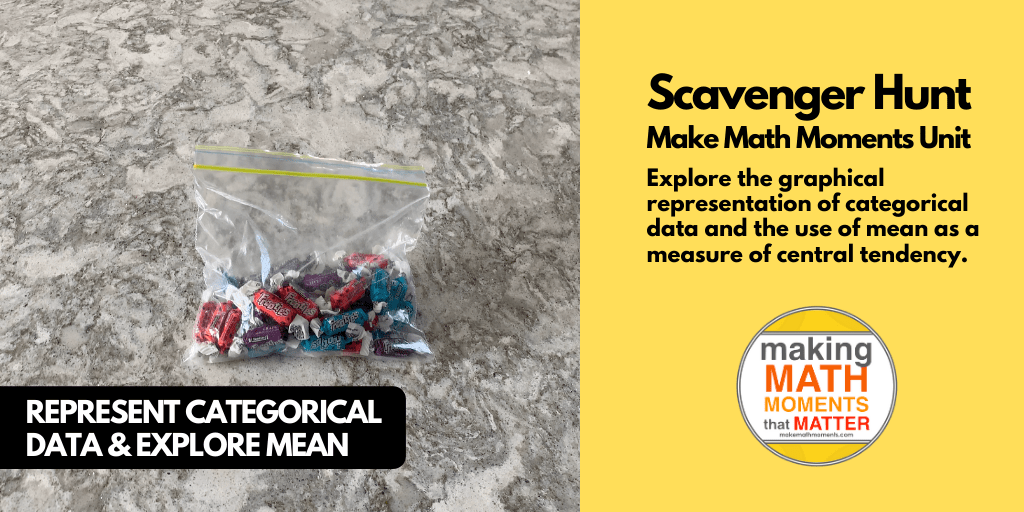
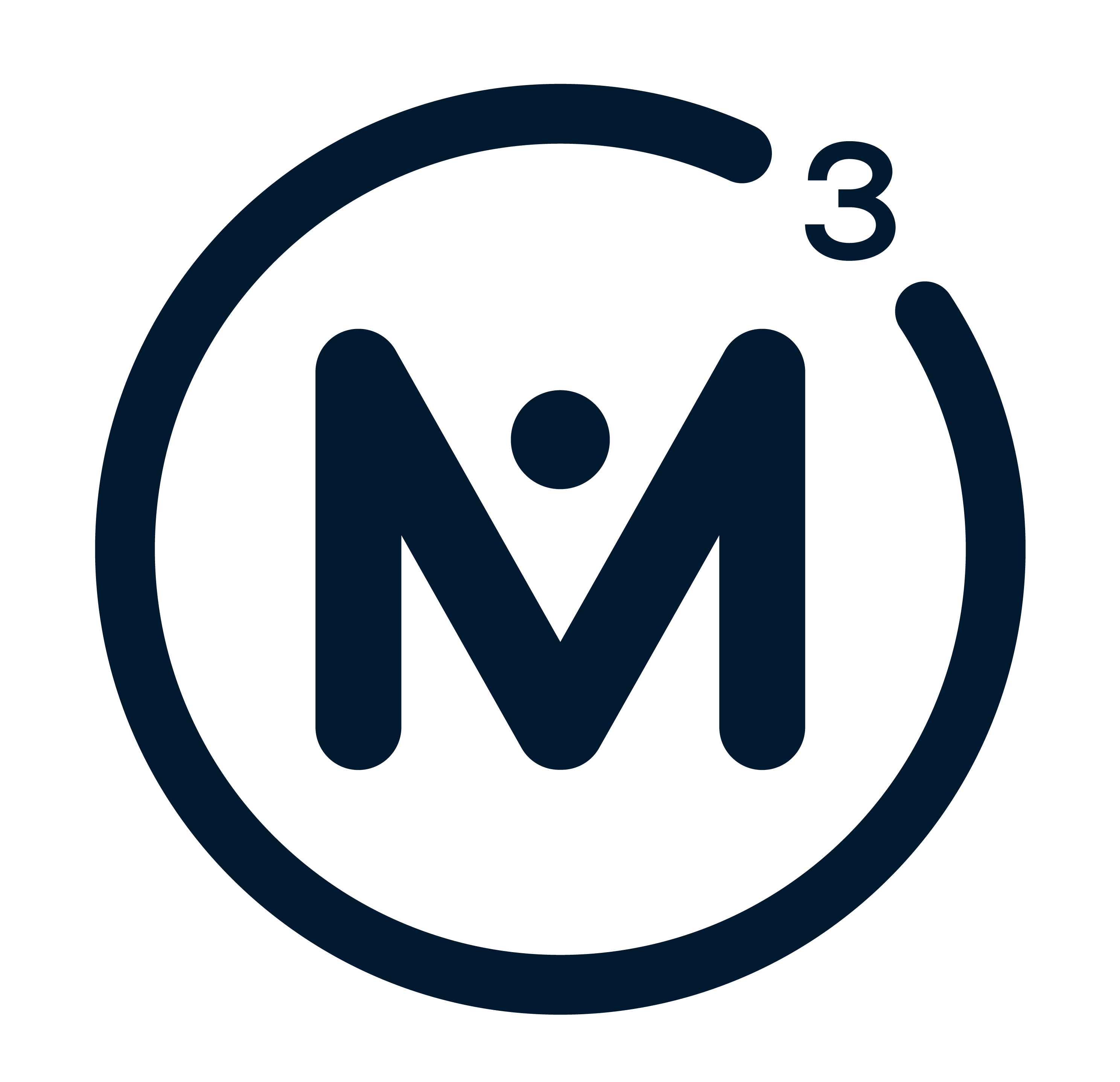
0 Comments